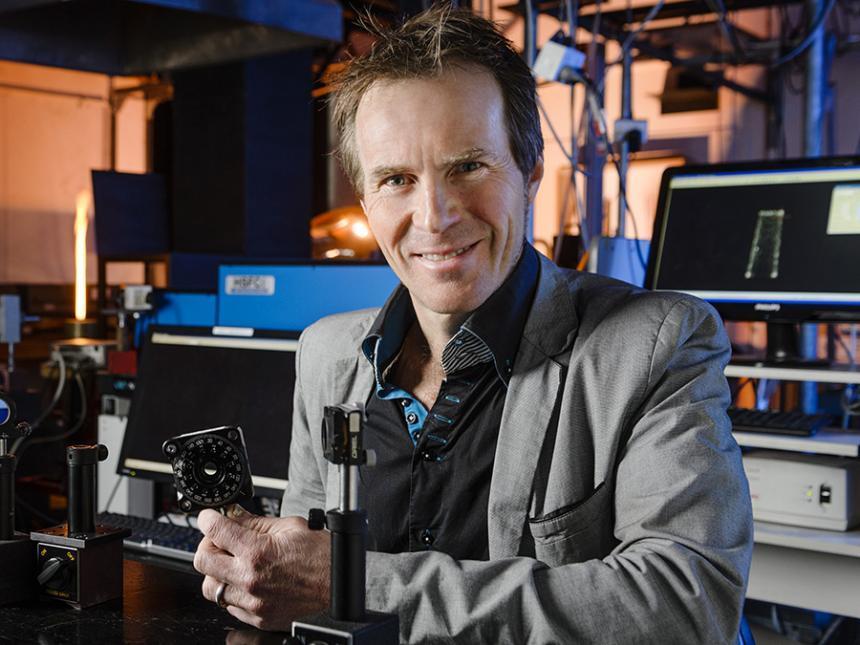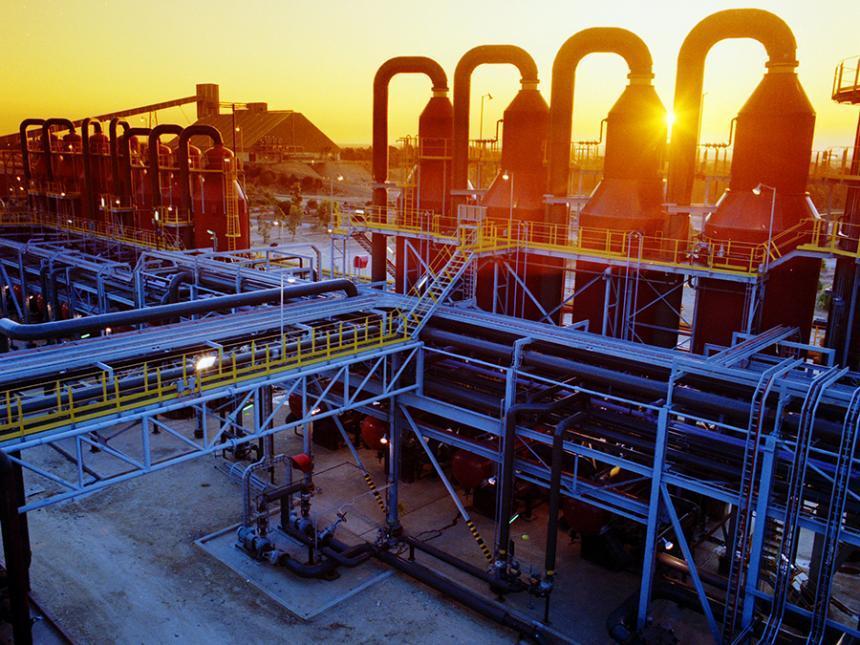High Temperature Calcination

Professor Gus Nathan,
University of Adelaide
CST is one of the most promising technologies for low cost decarbonising of high temperature process industries.Professor Gus Nathan, Program 3 Leader
For concentrating solar thermal energy (CST) to achieve its potential in high temperature processes, it is necessary to develop new technology. This is because CST has not yet been demonstrated commercially at the temperatures needed for calcination.
-
What we're doing

Alcoa's Wagerup Alumina Refinery has an annual production capacity of 2.5 million metric tons.
The project team for Program 3, is assessing different ways to add solar to the high temperature calcination stage of the Bayer process, including the introduction of concentrated solar radiation:
- directly to the reactor
- indirectly via the heating of particles.
We are working on the development of both a reactor and modelling tools to allow the economics of the process to be estimated. The model will be validated with our own data and with Alcoa’s process models. The validated model will be used to estimate viability of the process, accounting for solar resource variability, heat losses and syngas from solar reforming.
By assessing a range of options, we will identify the preferred path with which to introduce CST into the high temperature calcination process. This will be used to develop a plan for scale-up and demonstration of the technology in a future program.
-
Aims
- To identify a system suitable for continuous calcination of industrial quality alumina with a significant component of concentrating solar energy with low cost relative to selected alternative renewable energy technology options, considering:
- direct and indirect introduction of concentrating solar energy to the reactor
- beam up and beam-down configuration options
- hybridising with natural gas and/or solar syngas
- thermal energy storage options
- the influence of transients of the solar resource.
- To develop and demonstrate at laboratory scale, a reactor suitable for the above calcination process.
- To develop reliable engineering design tools to support the scale-up of the above reactor using a combination of experiments and numerical modelling tools, addressing:
- reliable models of the calcination process under conditions of relevance to the new process
- reliable models of the heat and mass transport processes within the new reactor.
Program 3 intended outputs:
- Process and techno-economic models to reliably estimate the economic viability of a new design solar-combustion hybrid calciner for high temperature calcination of alumina continuously at industrially realistic scales.
- Validated engineering design tools for reactor design and an approach for its integration into the process.
- A plan for on-sun demonstration of this technology at pilot-scale to be conducted at the CSIRO, Newcastle.
- To identify a system suitable for continuous calcination of industrial quality alumina with a significant component of concentrating solar energy with low cost relative to selected alternative renewable energy technology options, considering:
-
Why this program is needed
New technology is needed because the 1000ºC temperature of the commercial alumina calcination process is significantly higher than the 600ºC at which CST is commercially available. And while a number of individual component technologies have been demonstrated to operate at the necessary temperature at smaller scale, a system suitable for continuous production is not available.
We don’t yet understand enough about the performance of complete systems to enable preferred system configurations to be identified. However, significant progress has been made. For example, we have recently demonstrated the direct calcination of high quality alumina with concentrated solar radiation in a laboratory scale reactor.
Industry has been making alumina for about 130 years. Its most recent process step change was arguably the introduction of flash calcination in the 1980s. Step changes occur rarely but when they do they are very disruptive and result in large economic, social or environmental benefits. We are therefore working with the flash calcination process, but are also considering alternative pathways to operate these reactors to further increase performance.
Other approaches to decarbonise the high temperature minerals processing sector include the use of waste fuels, which have been widely adopted by the cement industry. While waste fuels are able to generate the temperatures needed for calcination, they also bring contaminants, which can be absorbed by the cement process but are not suitable for cleaner products such as alumina. In addition, there is not enough waste fuel in the world to meet the needs of all industrial processes, so that other technologies are also needed. CST is among the most promising of the alternative options.
-
Progress
The team is working on the fundamentals of the process and the techno-economics, and have identified opportunities for investigation. We’ve already identified other conditions under which it may be attractive to perform the calcination. And we have begun the techno-economic analysis, as explained below.
Process models of energy flows in the alumina calcination stage of the Bayer process
The team has developed a preliminary process model based on the flash calcination process in Alcoa’s Pinjarra refinery with natural gas as the energy source. The model was developed using Aspen and Microsoft Excel.
The energy consumption calculated with the present version of this process model gives a calculated energy consumption with methane as the fuel of 3GJ/tonne of alumina. This matches well with the actual industrial process. Our estimated energy consumption for the alternative fuels syngas and hydrogen is very similar, providing some confidence that alternative fuels can be used.
First stage of process models of hybrid calciner for the Bayer process
The first stage of process models for the proposed solar hybrid calciner was developed. This solar hybrid calciner can be operated either using solar energy, both solar energy and natural gas/syngas, or natural gas/syngas. The modelling work was carried out using Aspen and Microsoft Excel. The performance from these will be reported shortly
Four solar thermal integration options have been investigated:
- Replacement of the flash calciner with a solar hybrid calciner with constant air inlet temperature
- Replacement of the flash calciner with a solar hybrid calciner with variable air inlet temperature
- Integration of a solar reformer into the calcination process without syngas storage
- Integration of a solar reformer into the calcination process with syngas storage.
We have also developed a heliostat field layout to optimise the aperture size of a 50MWth cavity receiver operated at 1000°C on a tower height of 150m using CSIRO’s Heliosim software. This is being used to calculate performance more reliably than was possible previously.
